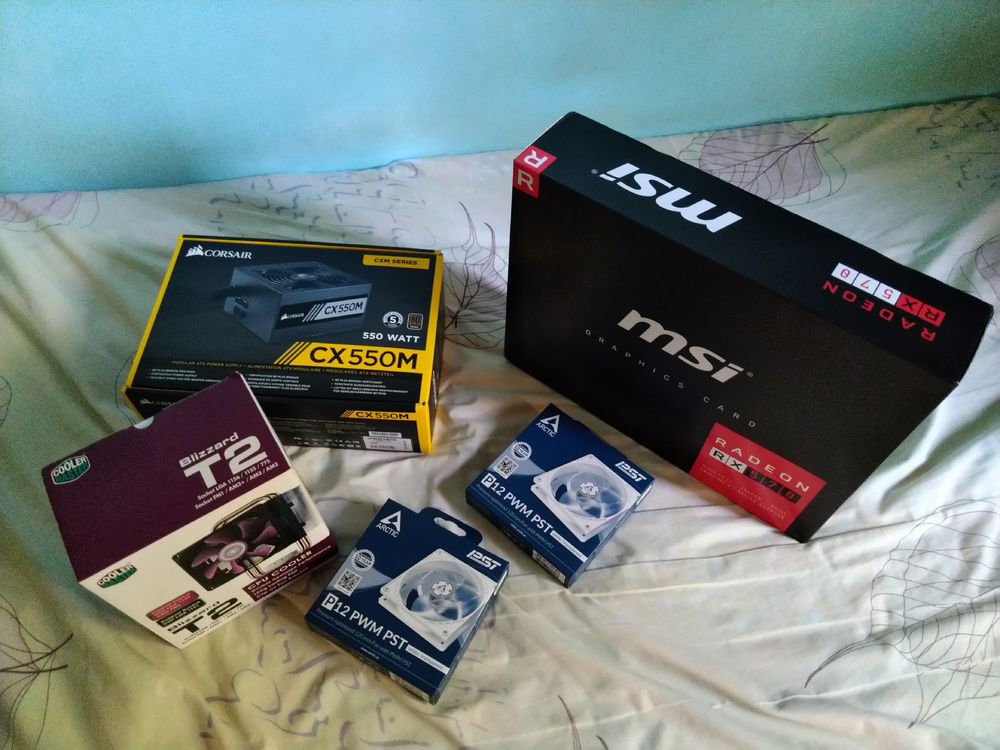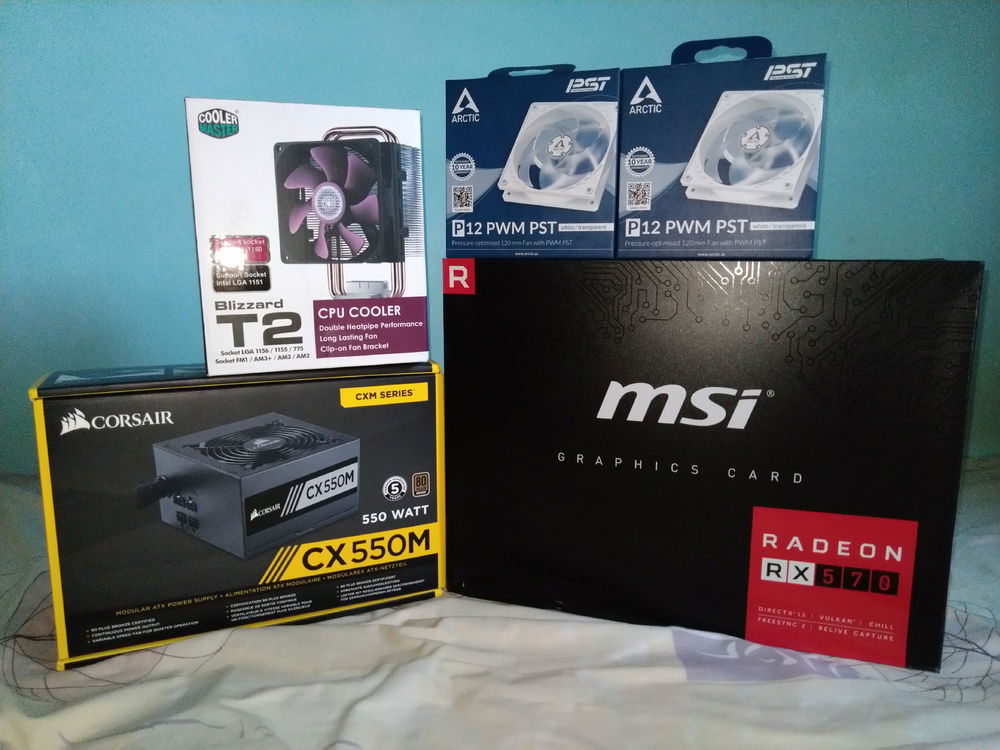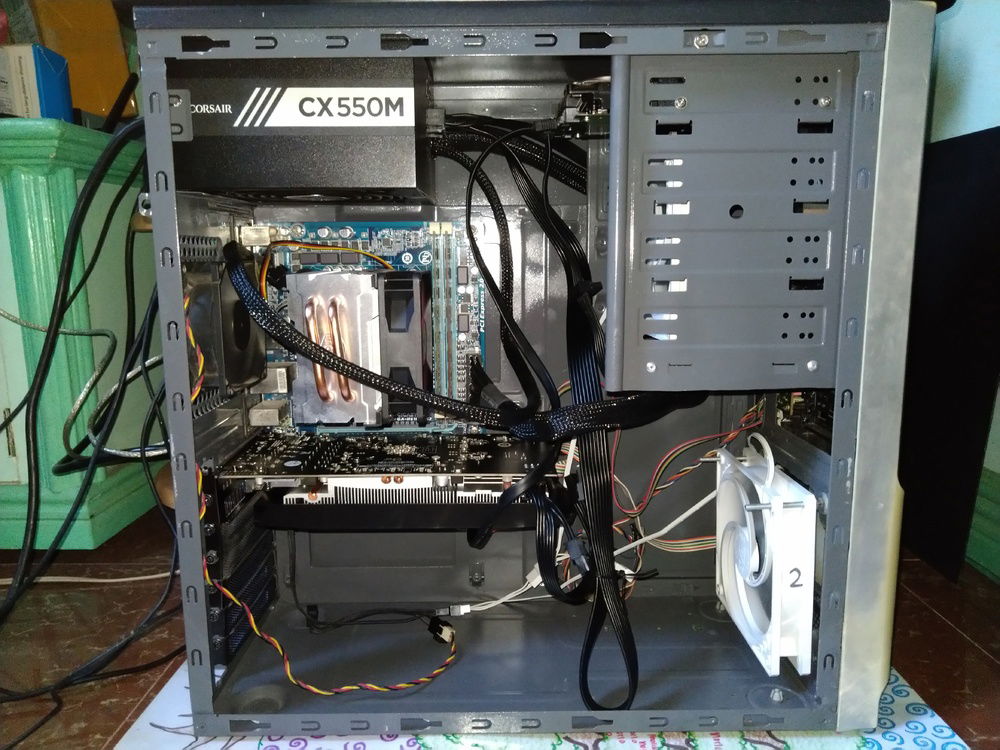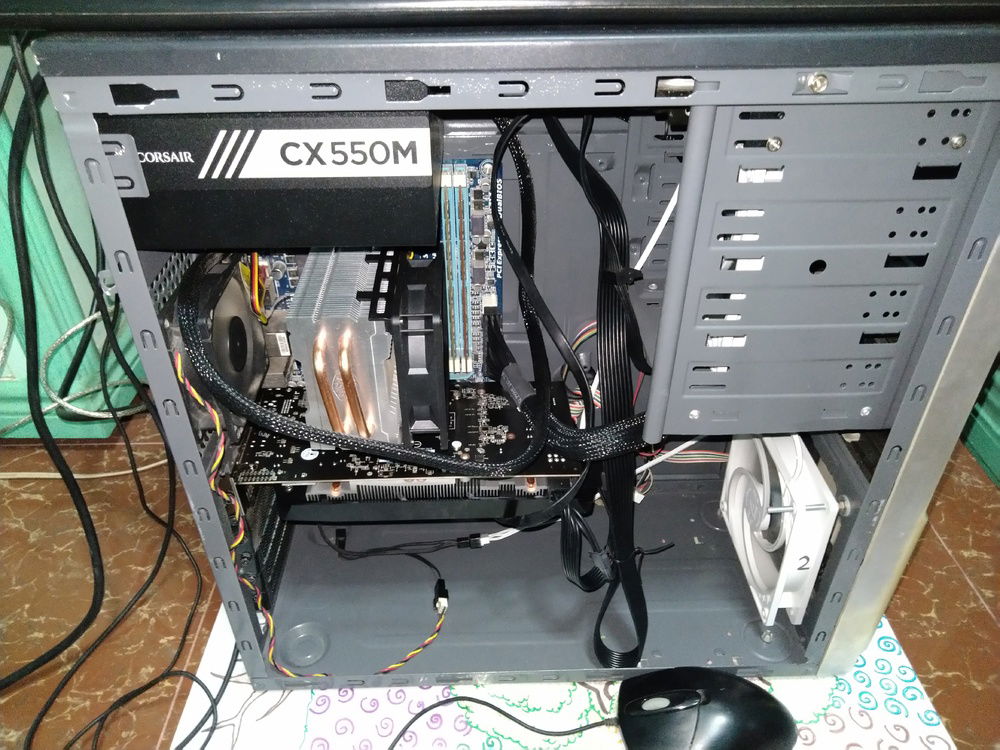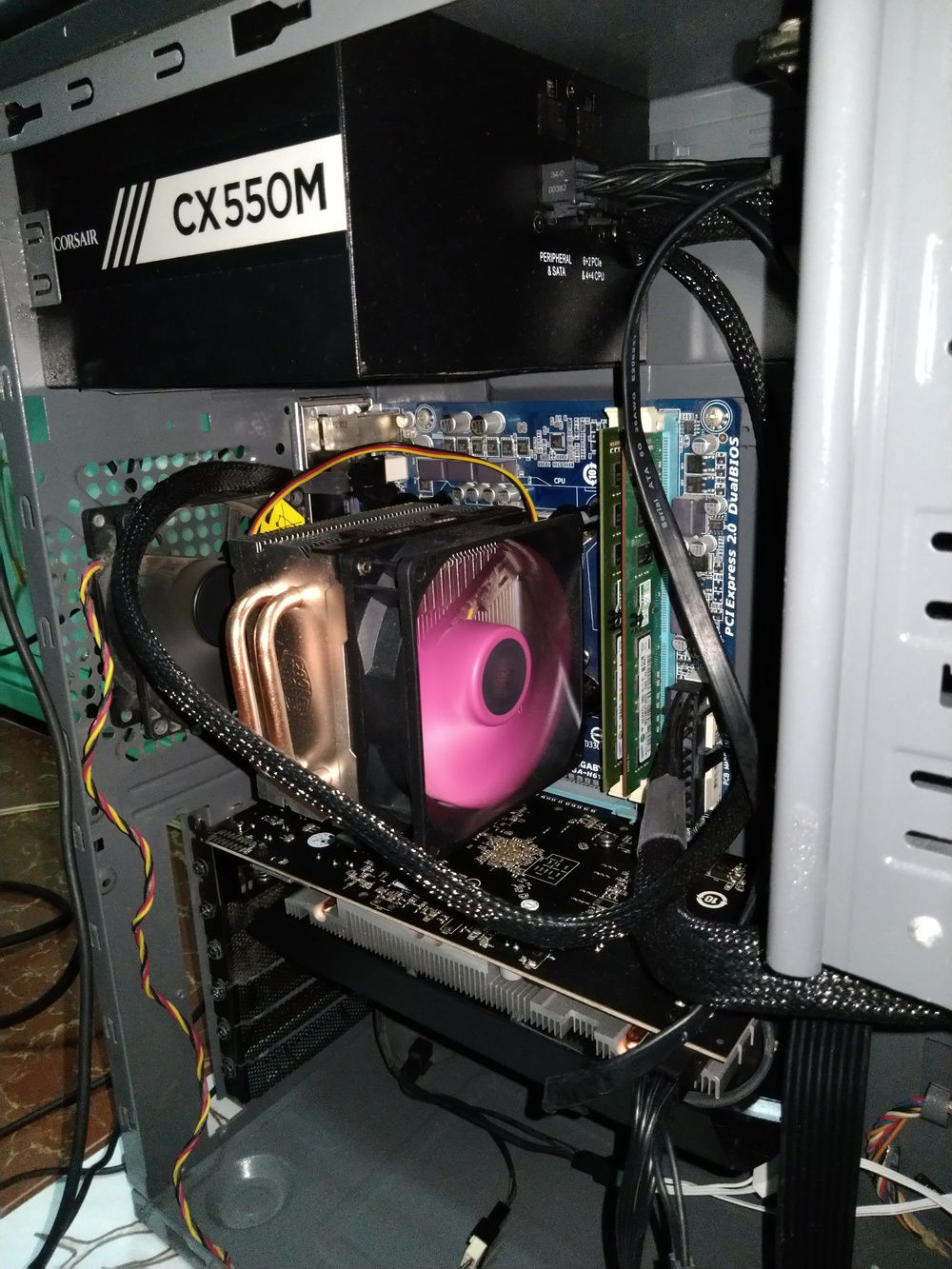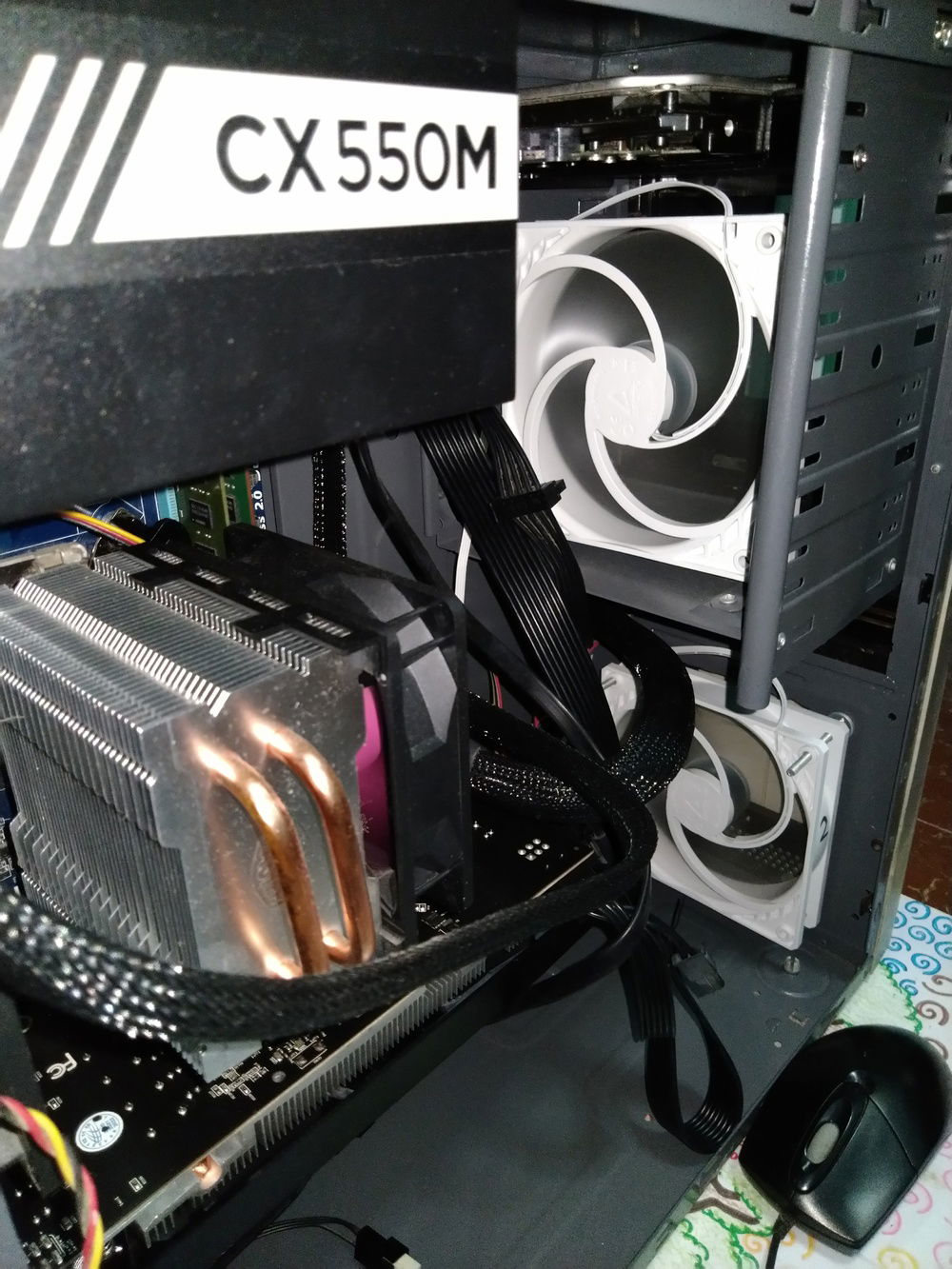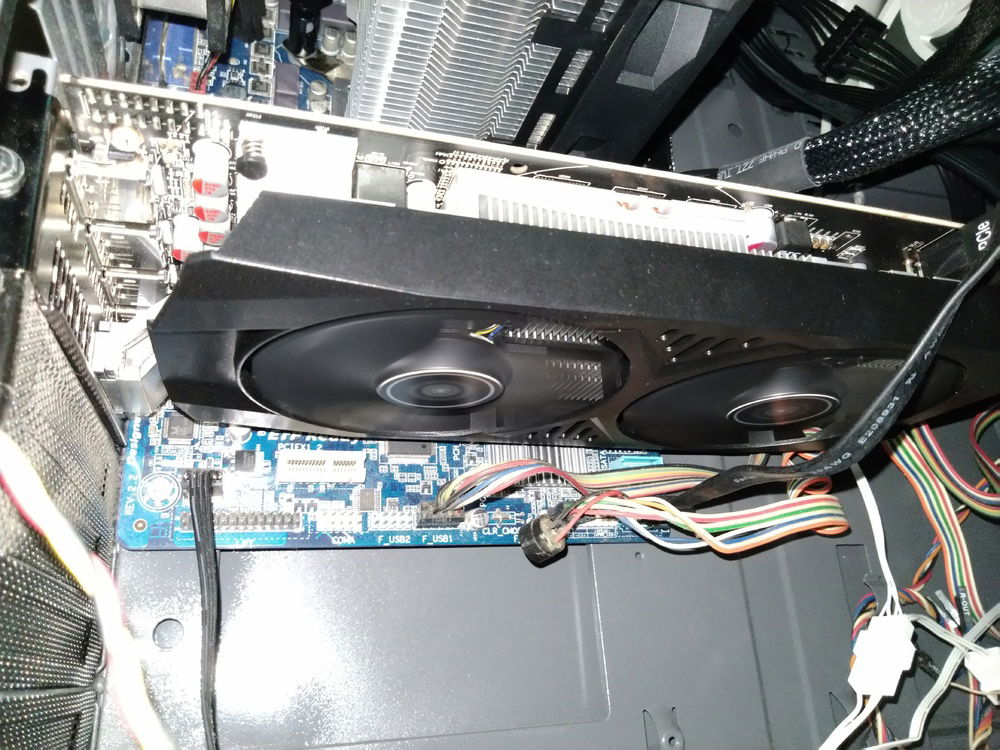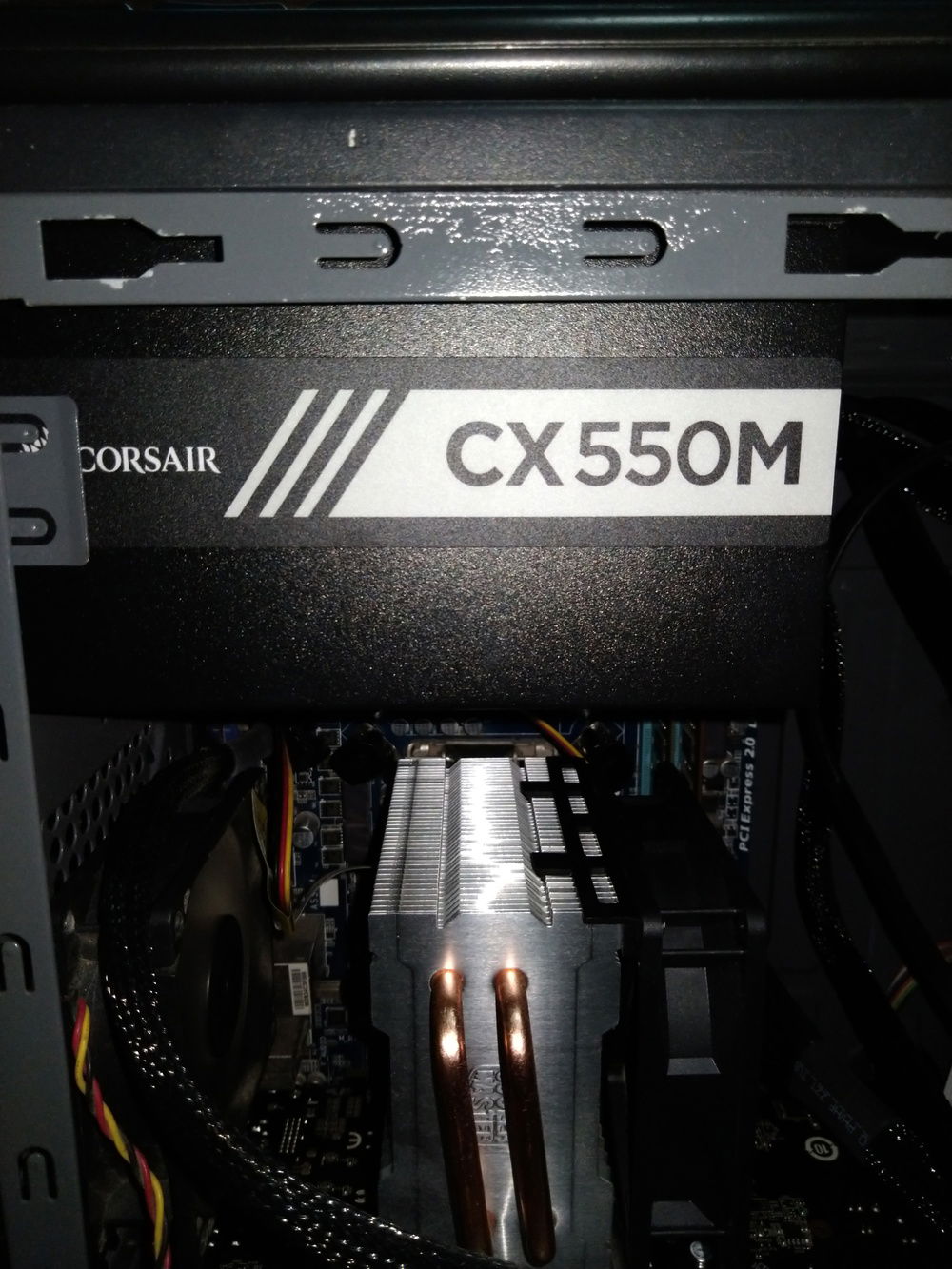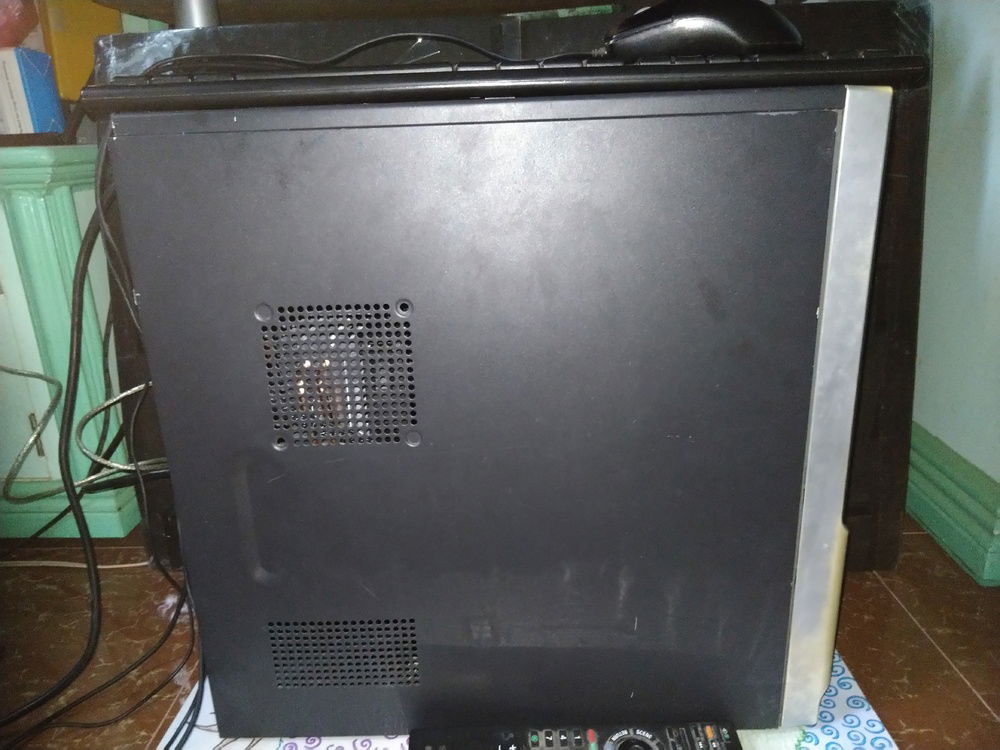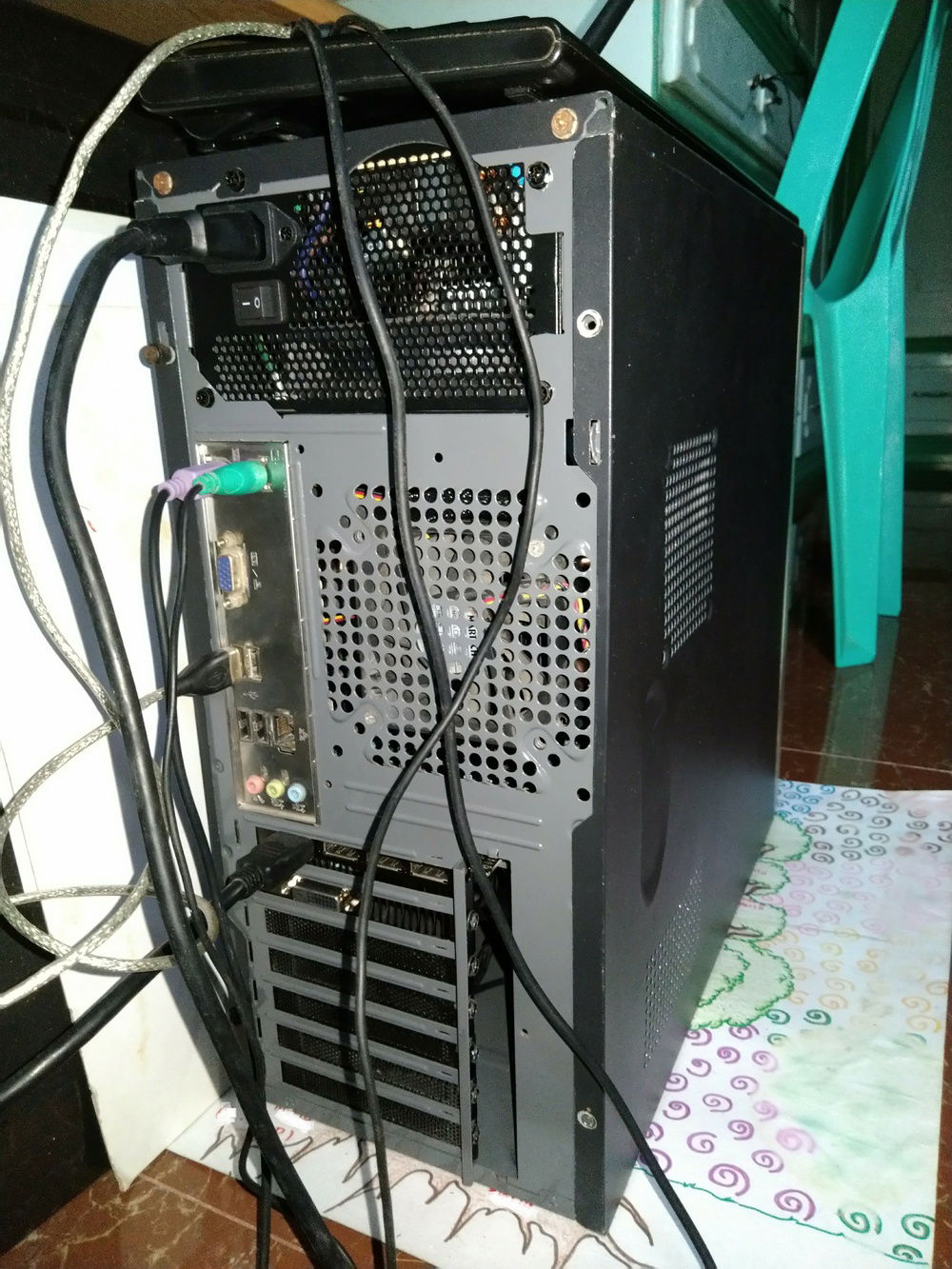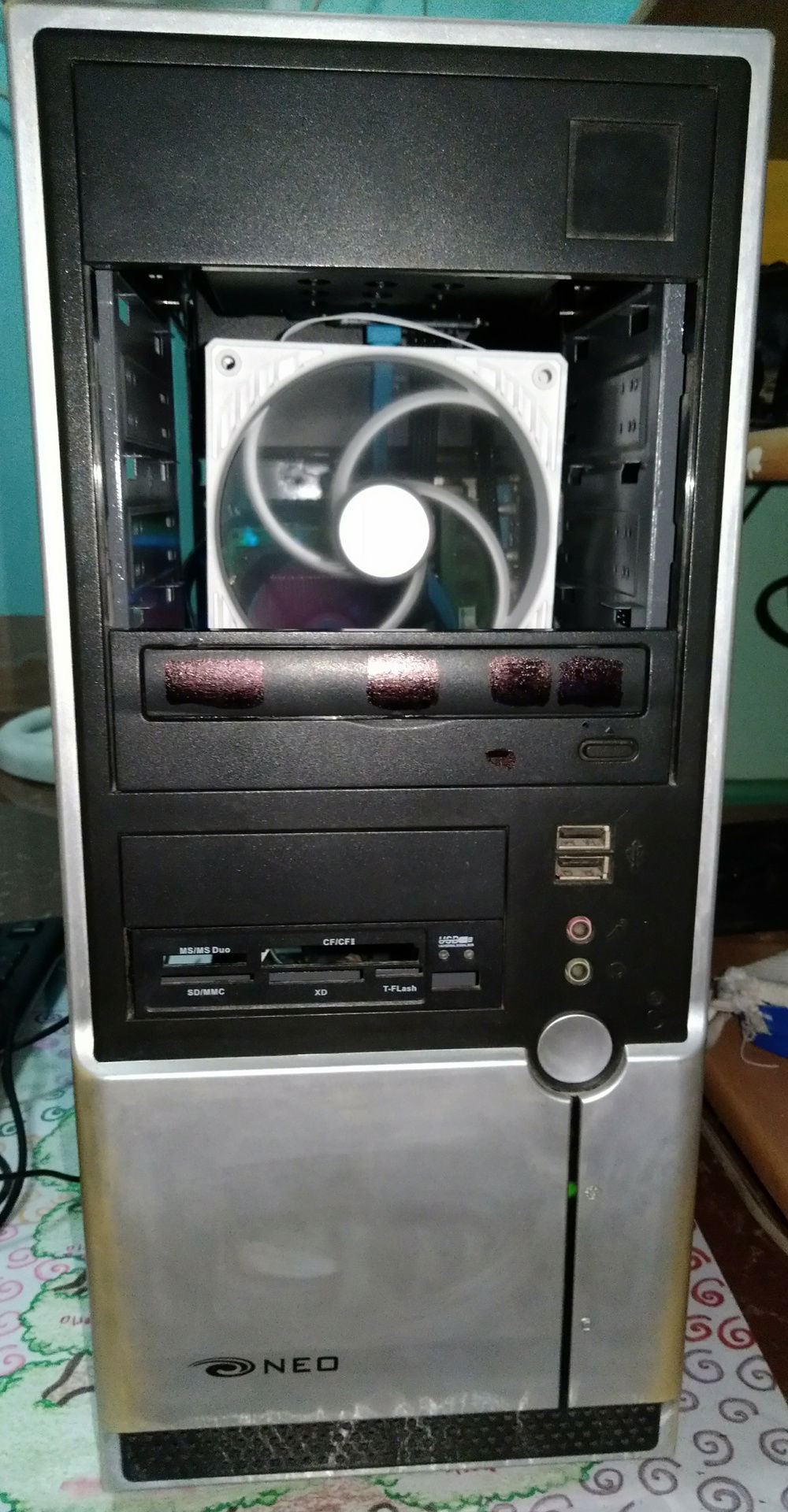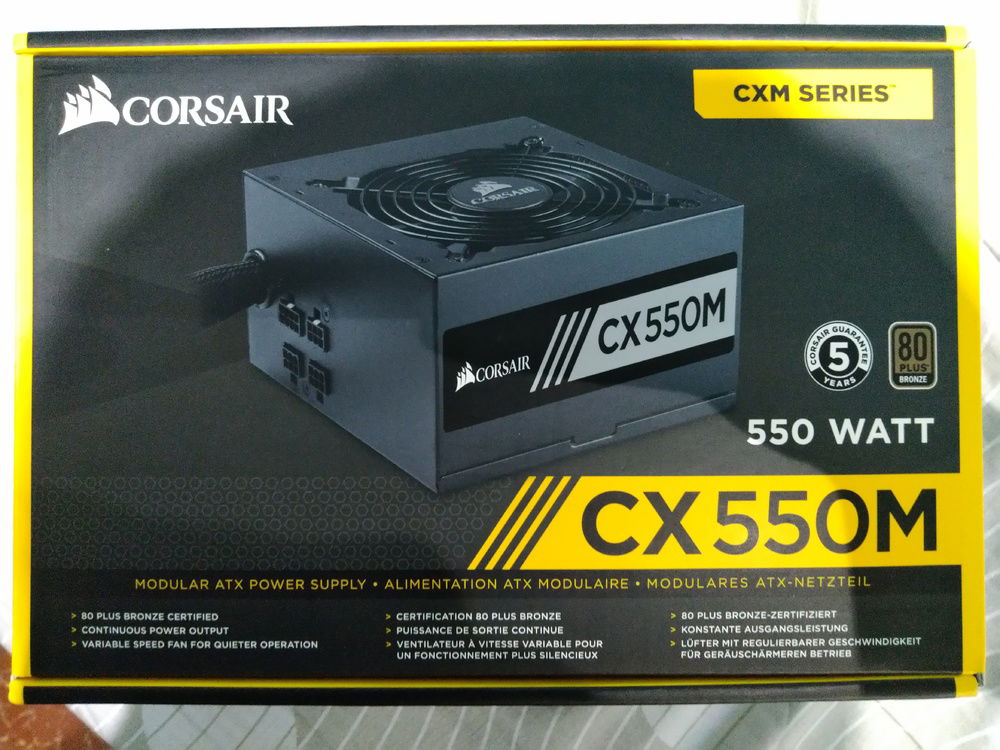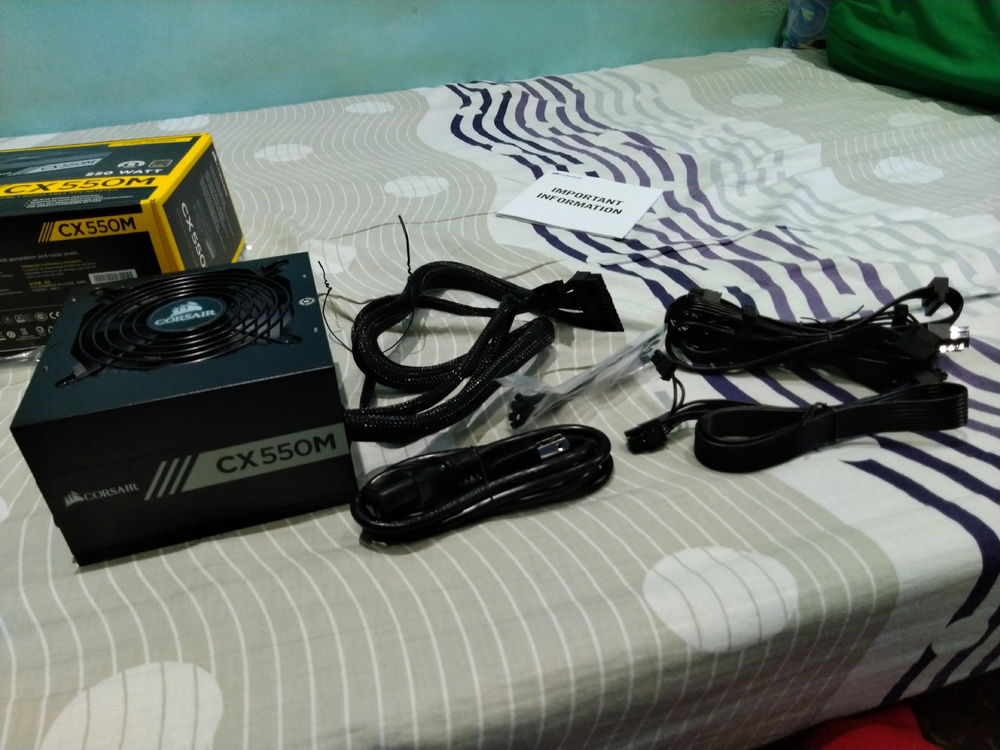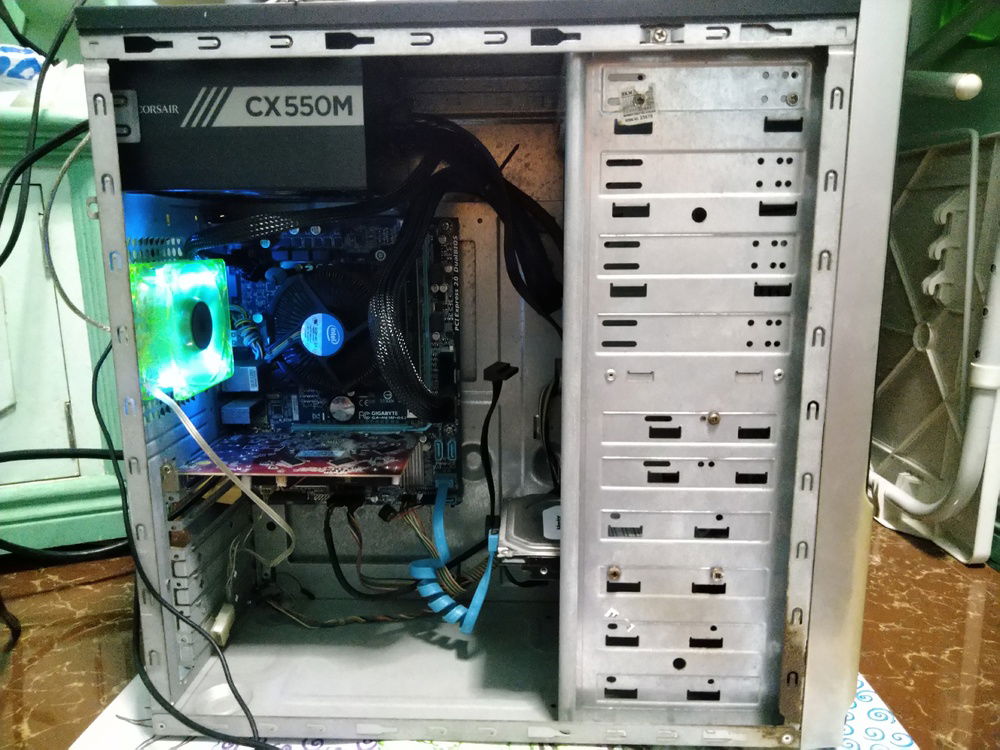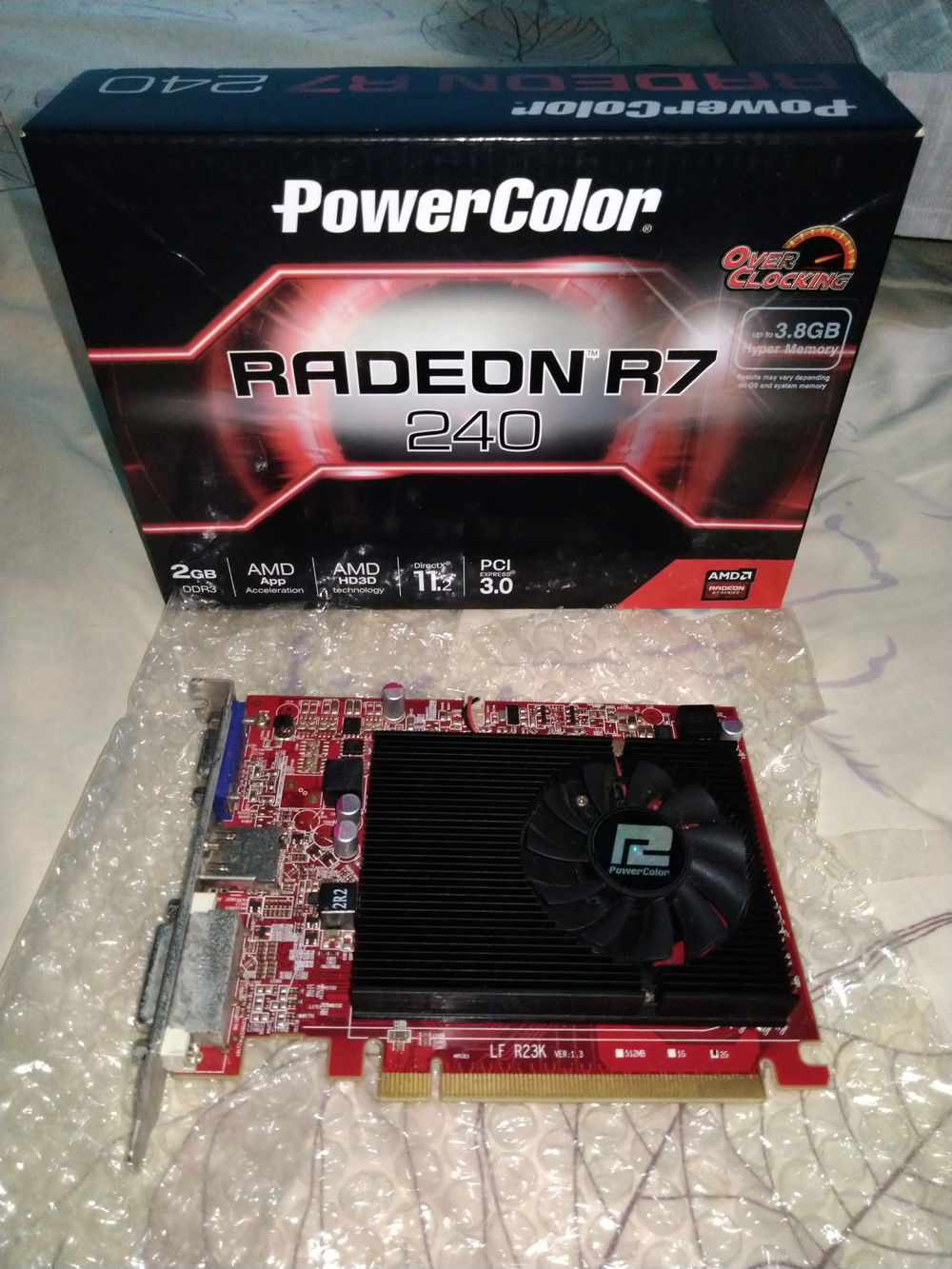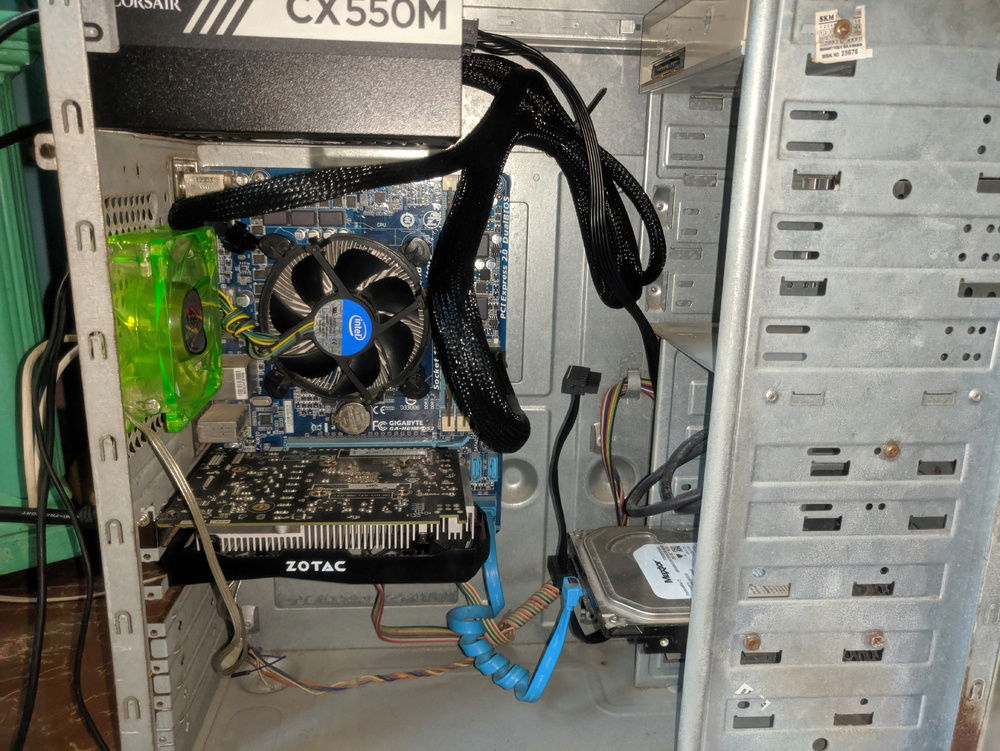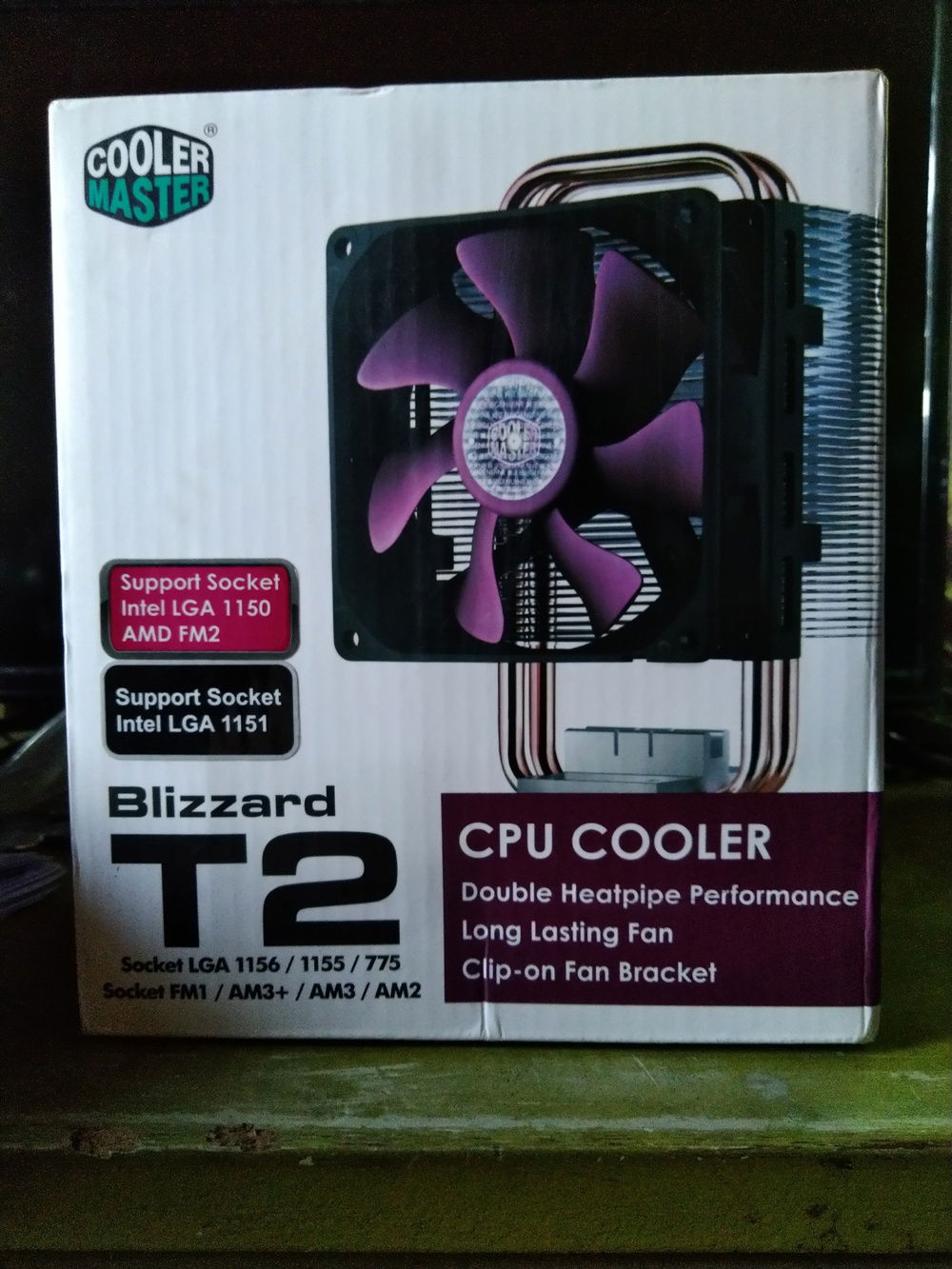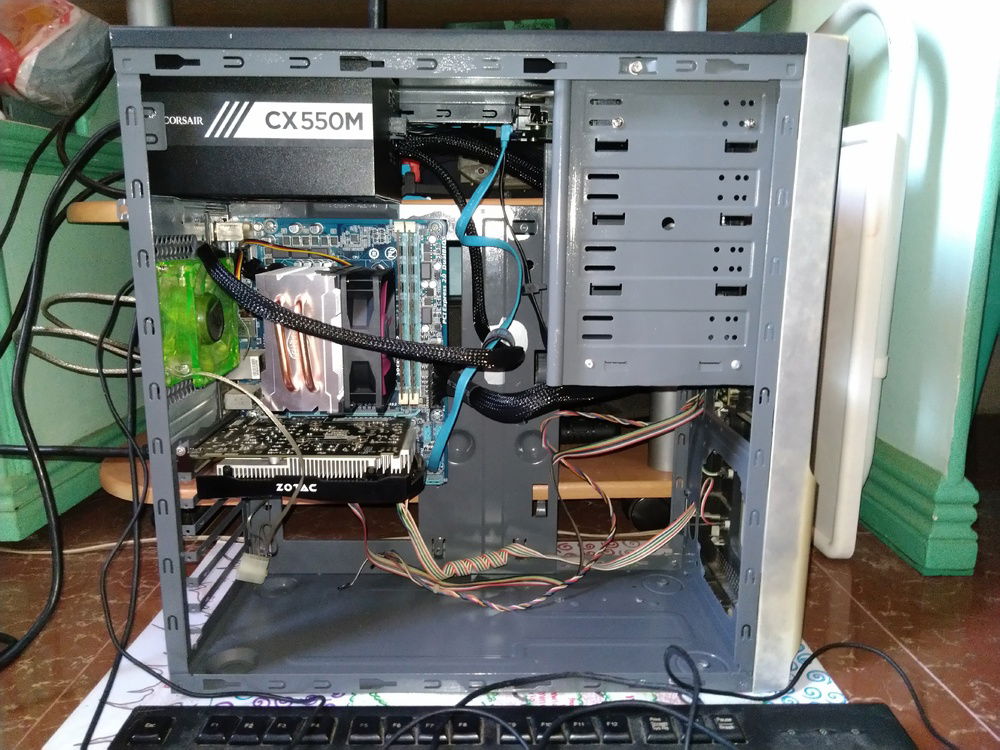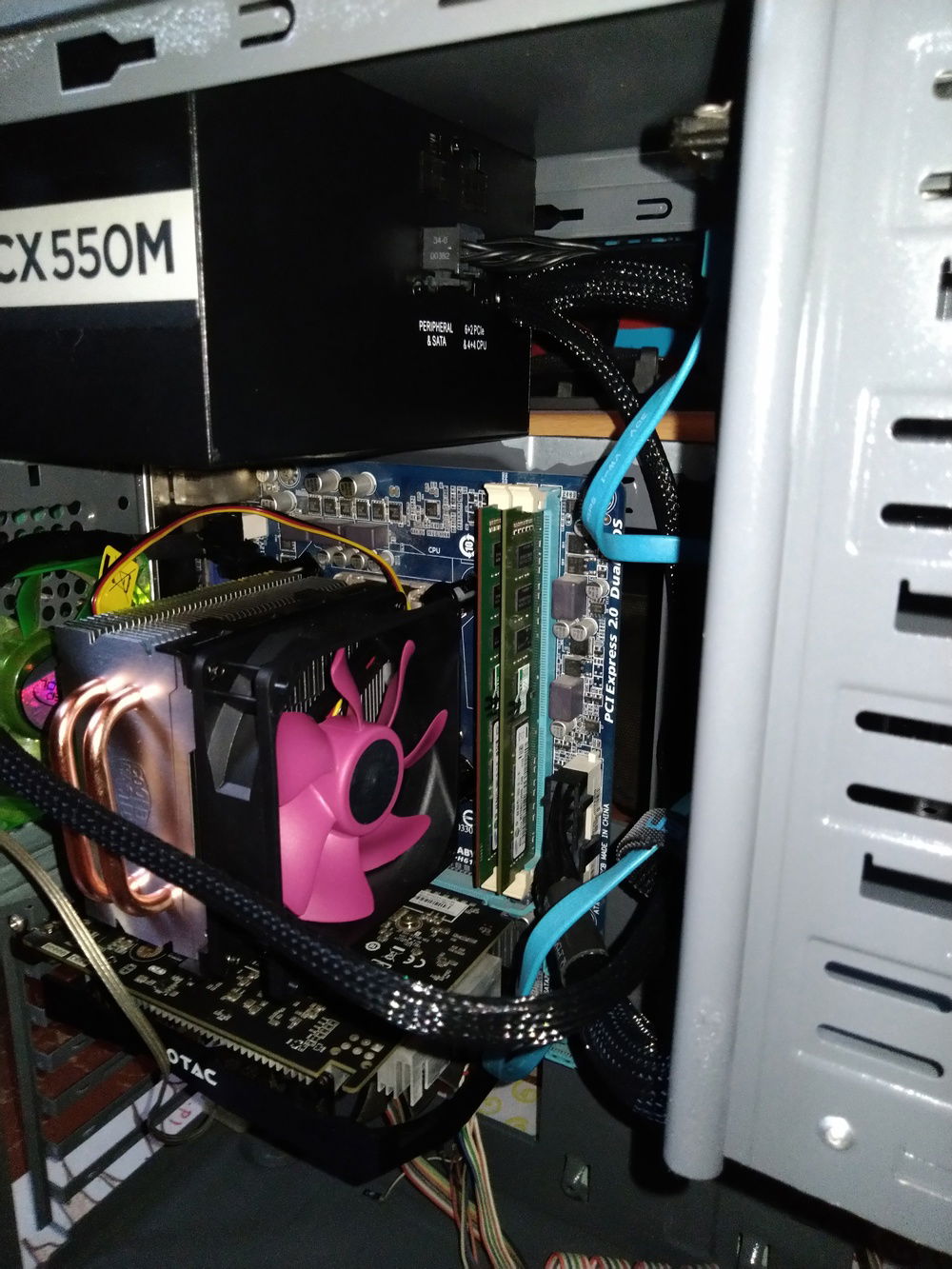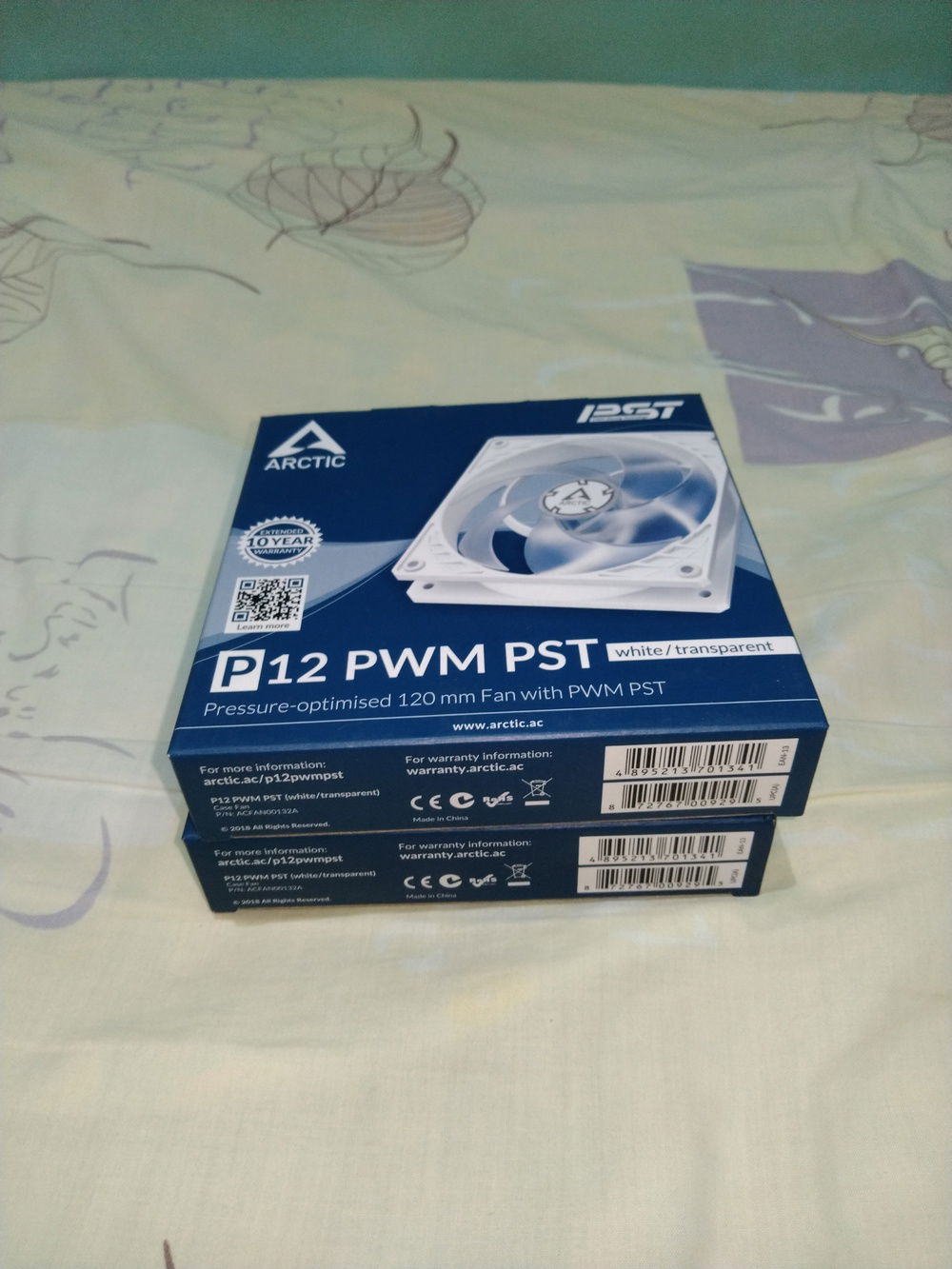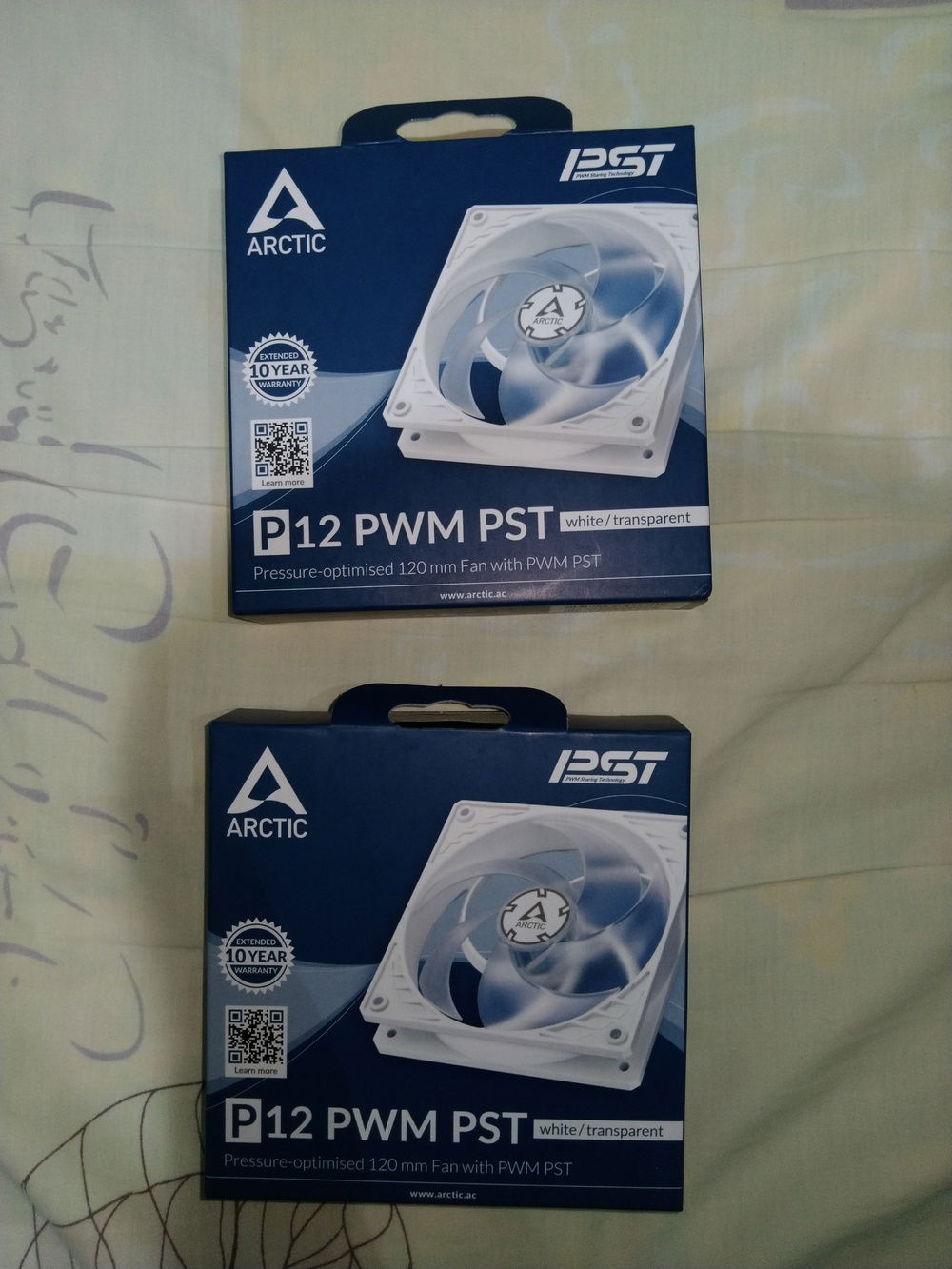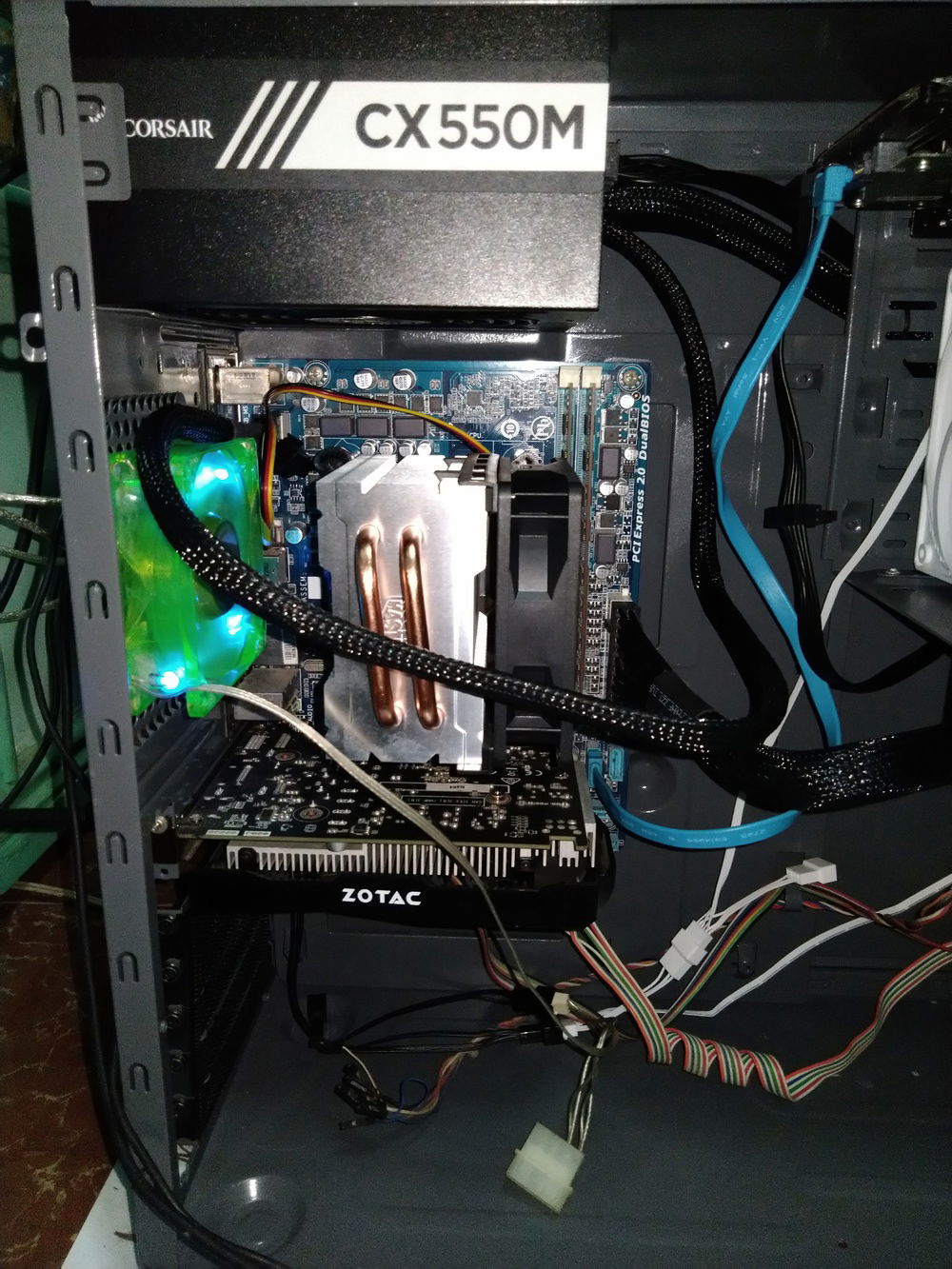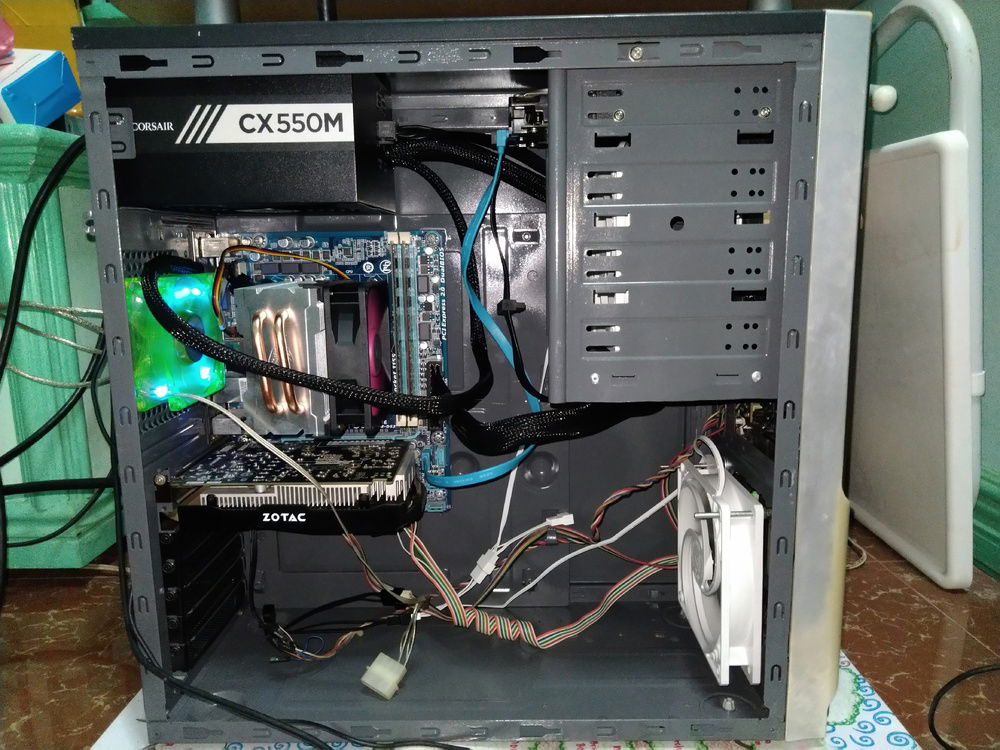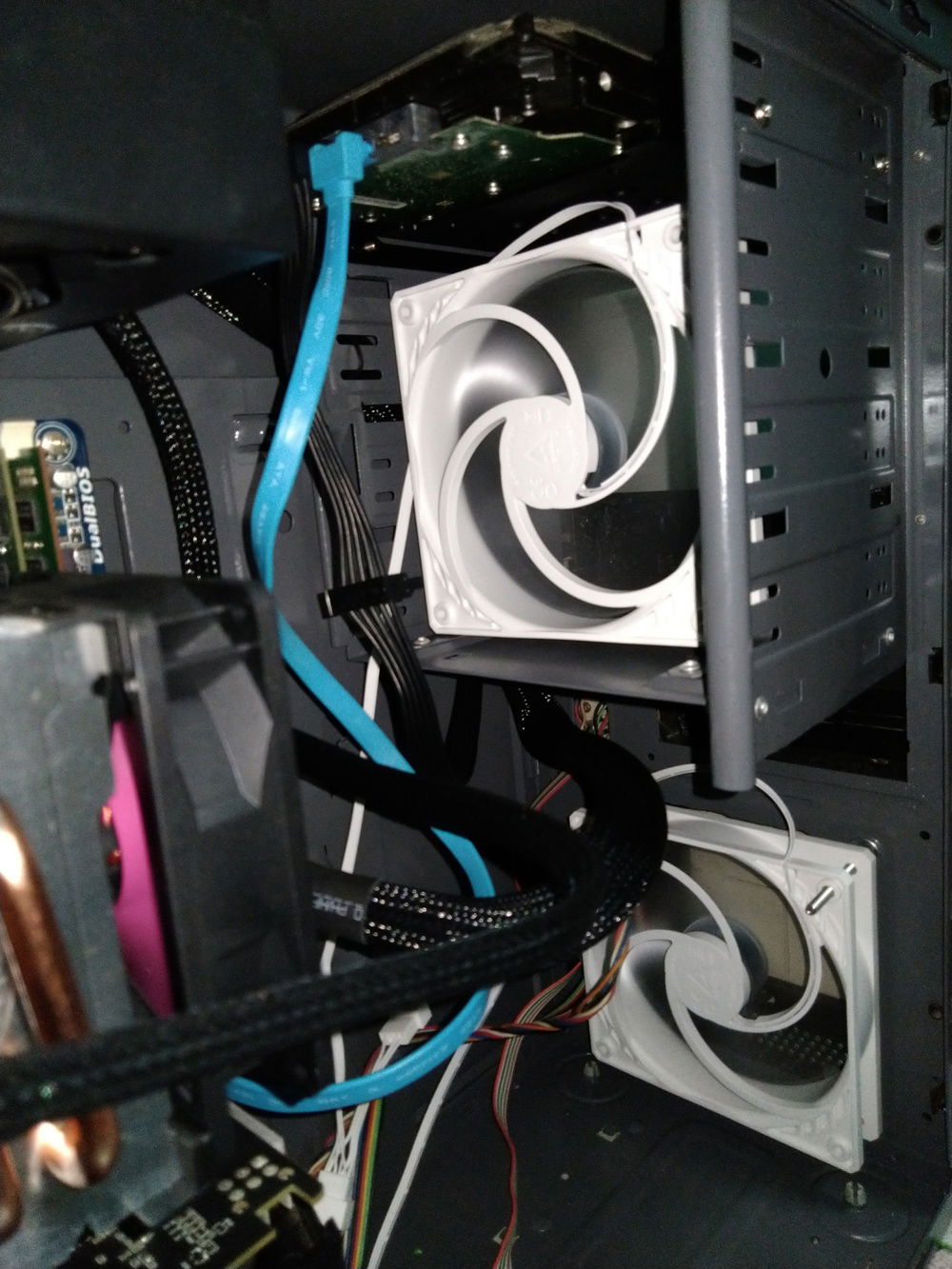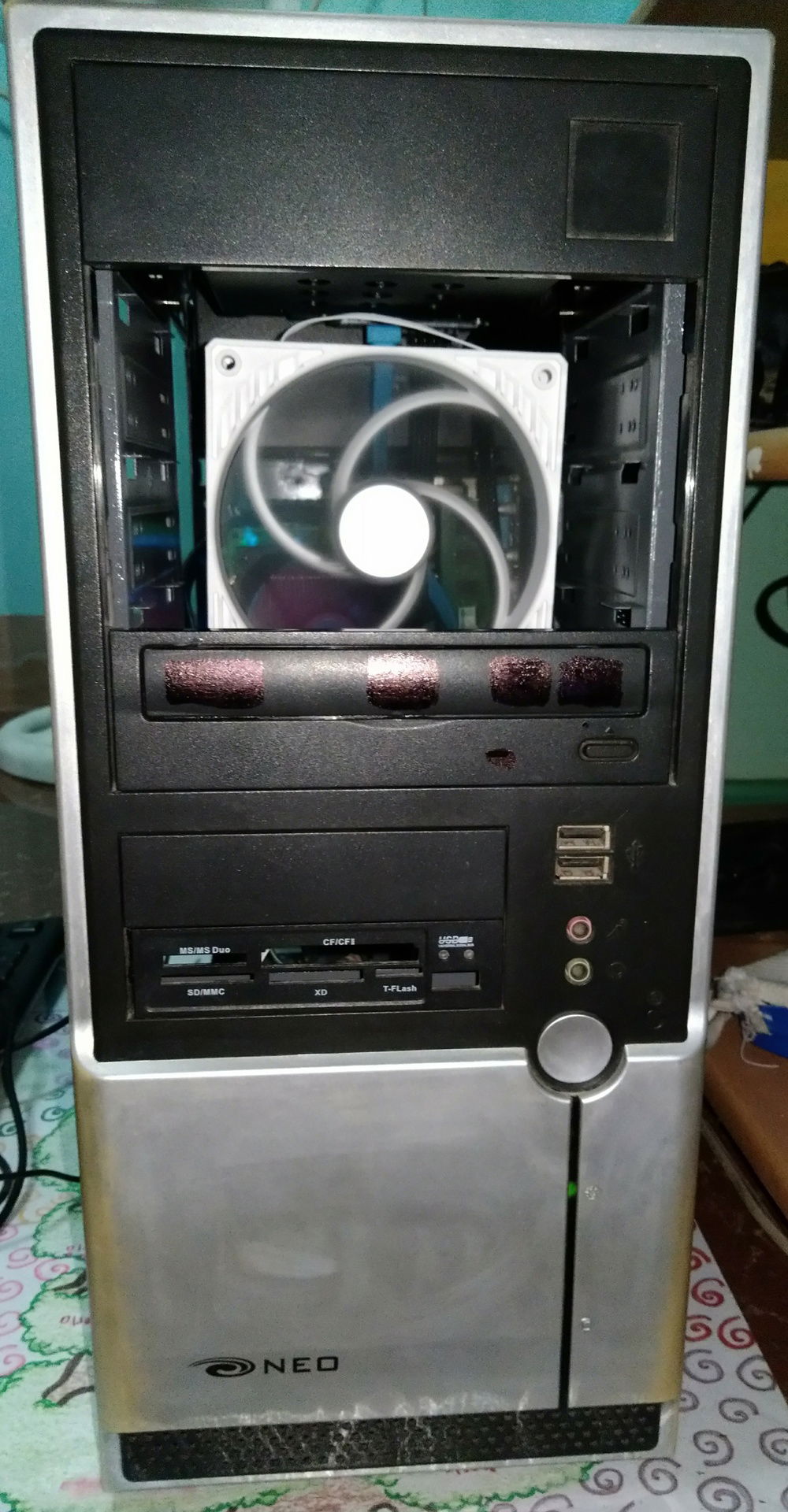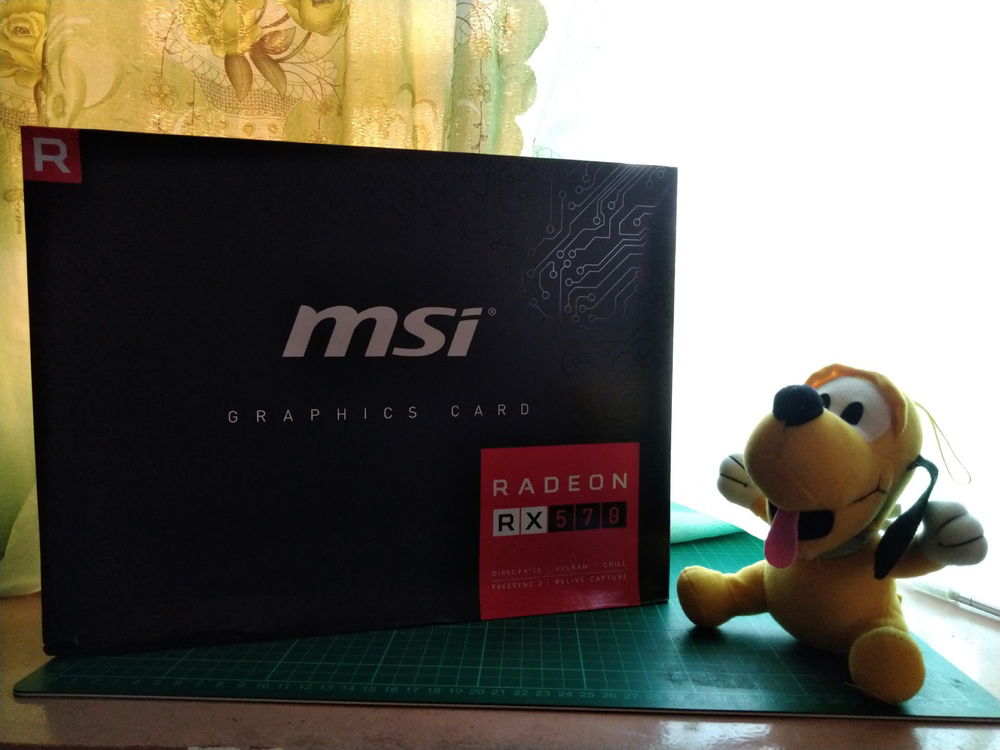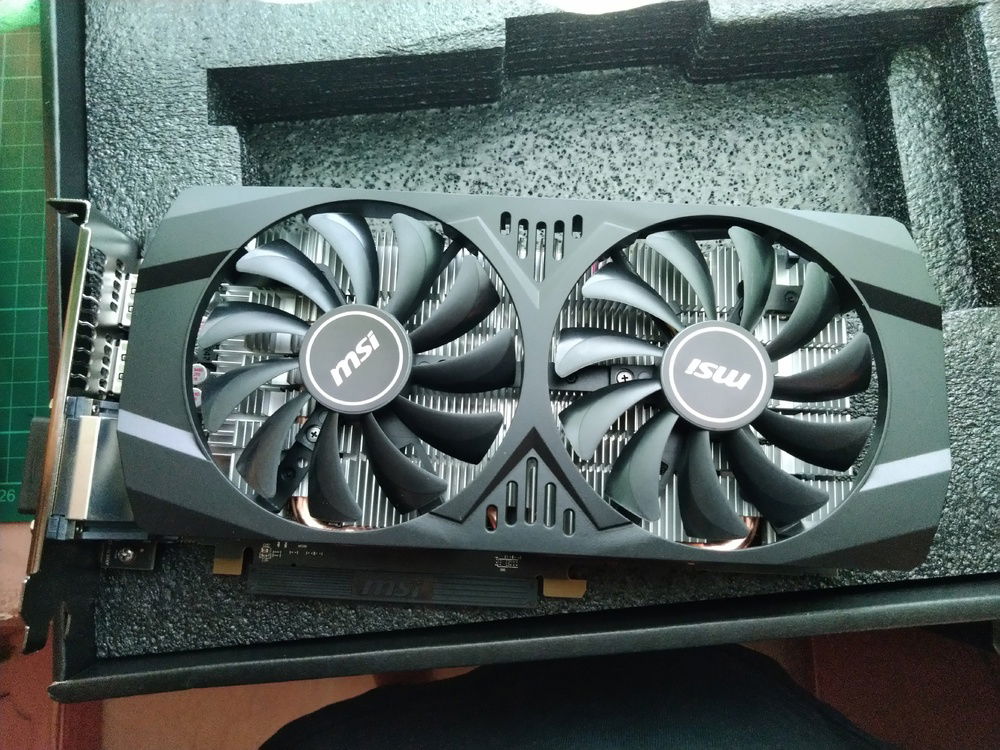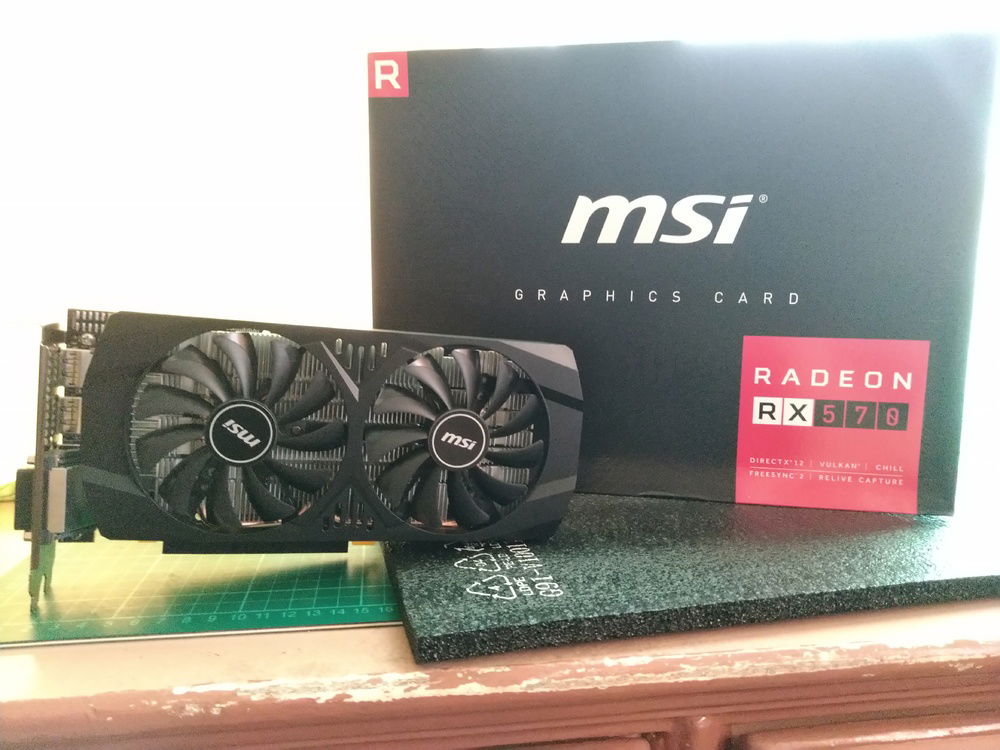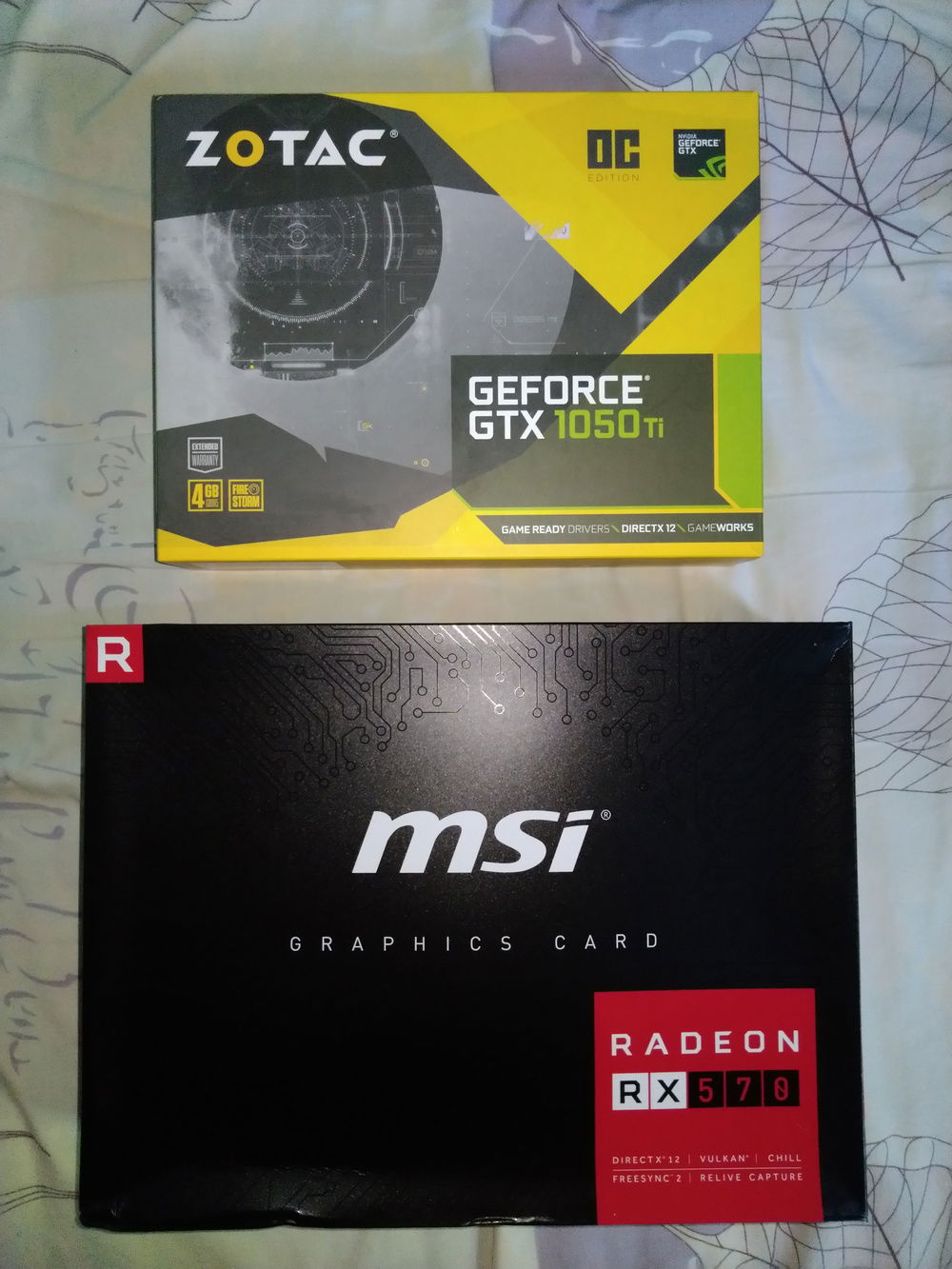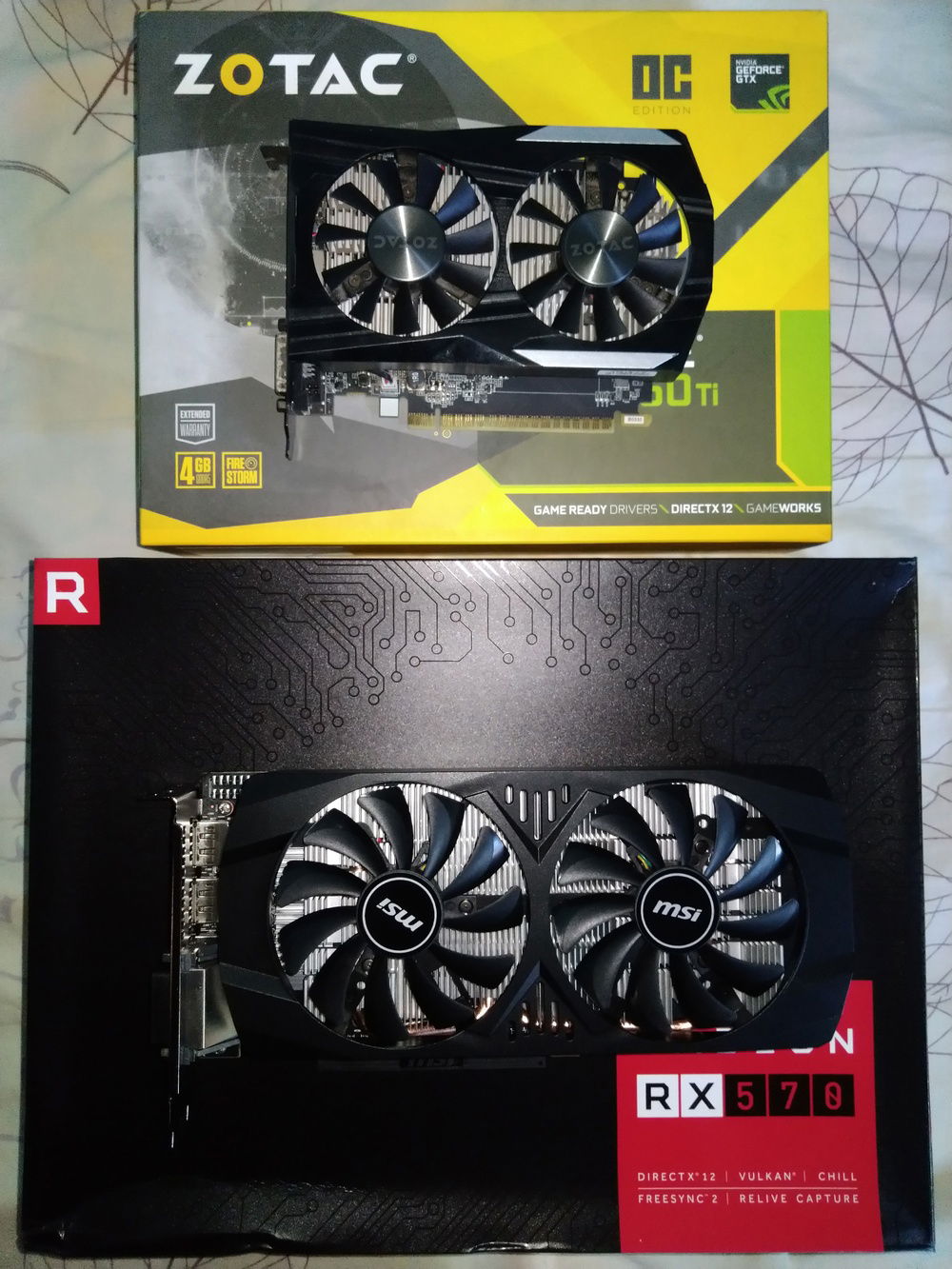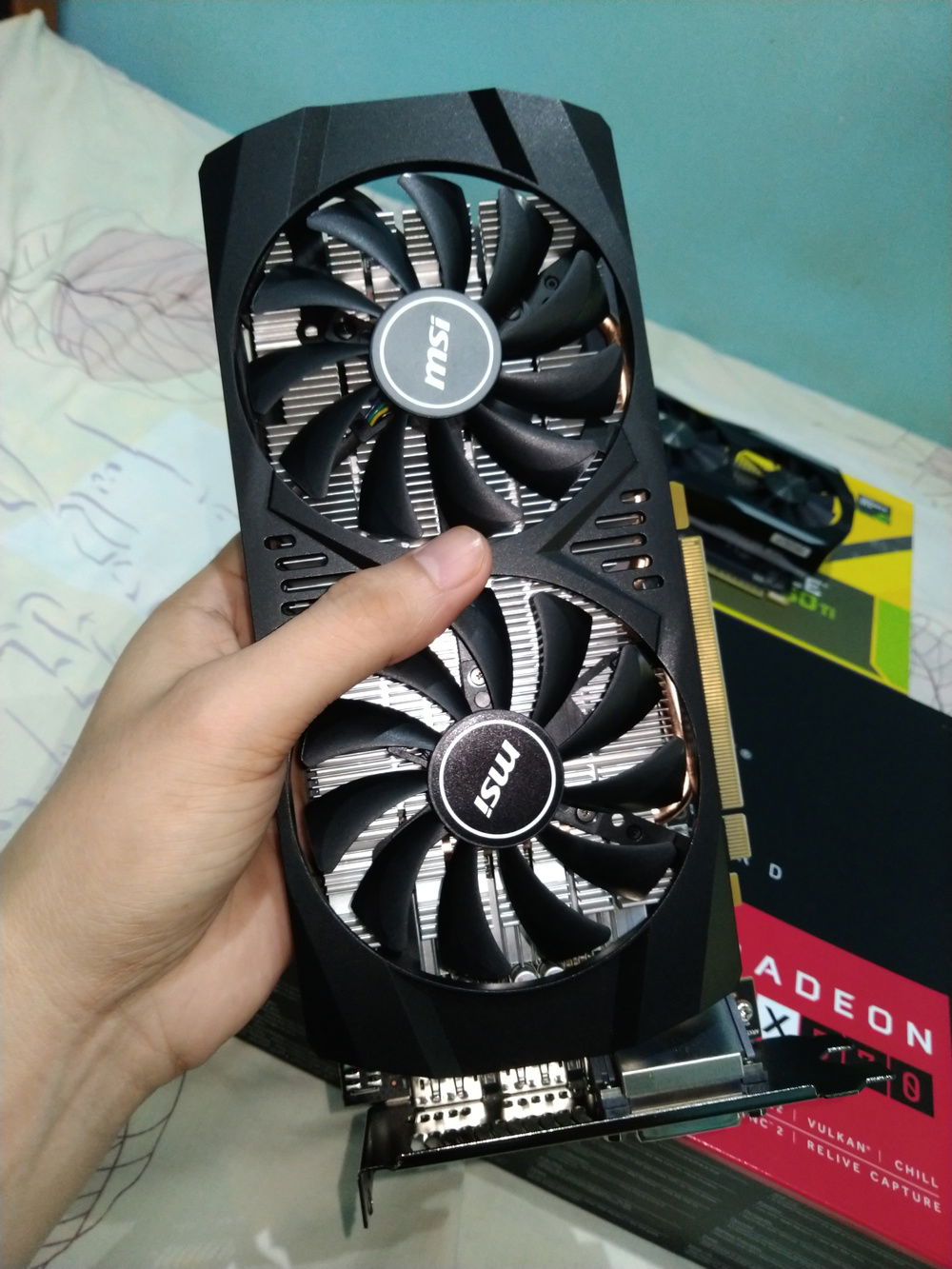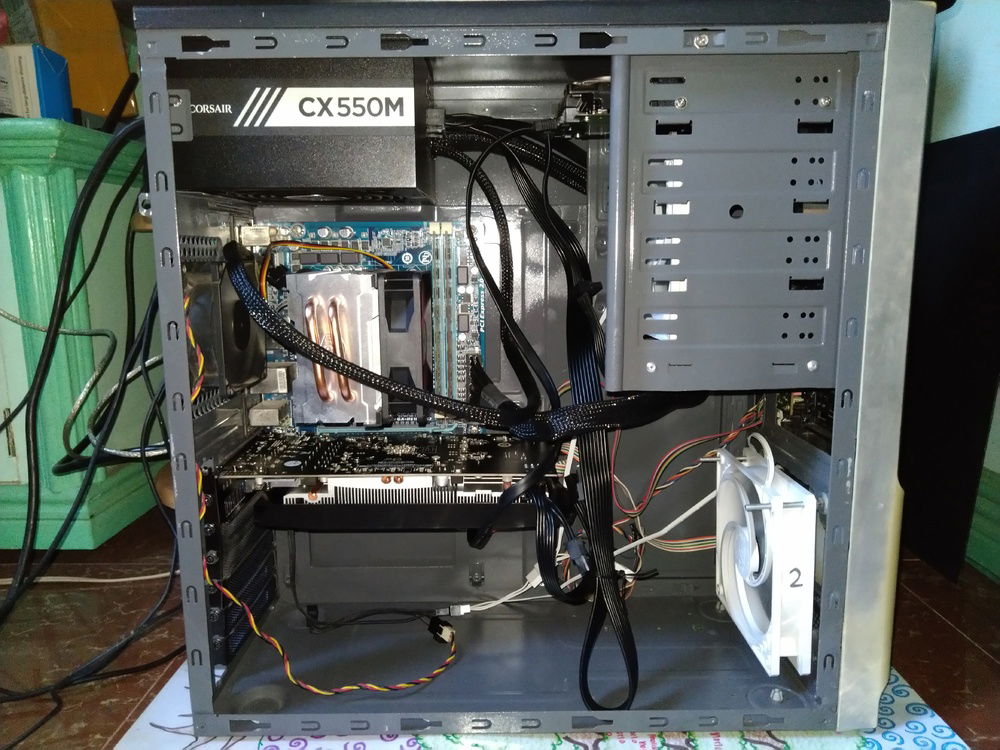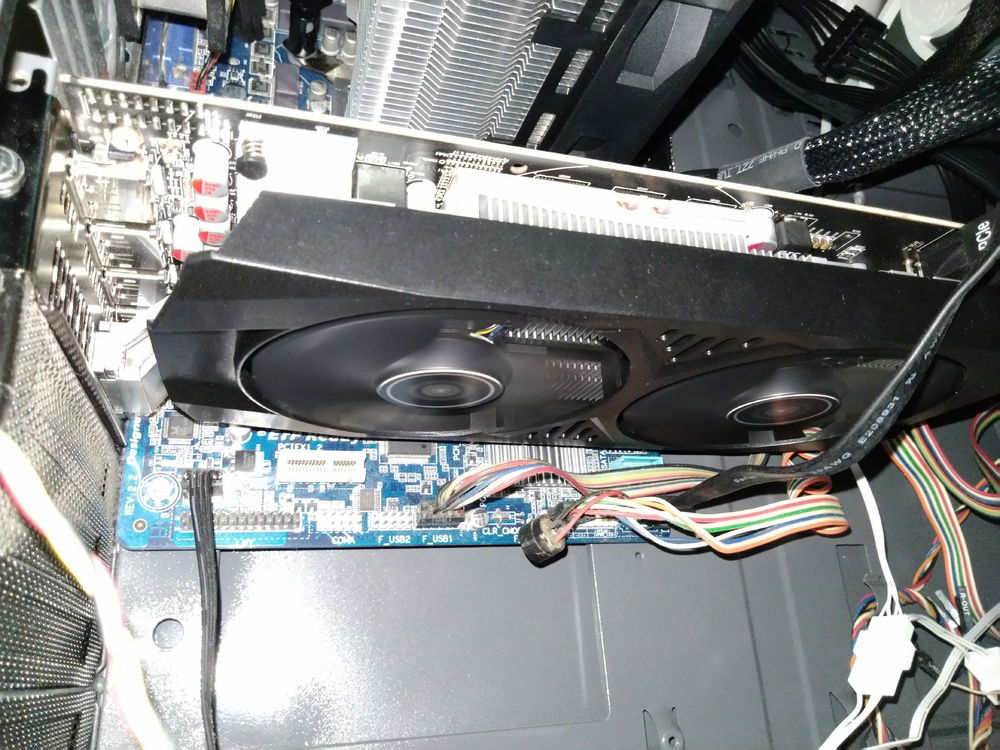Ivy Bridge Sleeper Build
This "Sleeper PC" was built for light/moderate gaming, casual mining, internet surfing, audio/video editing, and other light applications. It uses leftover parts that I had at home for a long time, and modern parts that were sourced from physical PC retail stores and online shopping sites. With its novelty and decent performance, this build emerged as my versatile companion in entertainment.
THE ORIGINAL COMPONENTS
Two computers were decommissioned: The 775 unit and the 1155 unit.
775 Unit: This unit was purchased in 2008 and used until 2013. It was kept in the closet for 3 years and reused when the newly-purchased R7 240 was installed for a test in gaming. After a month long use, the whole system unit was kept once again for another 2 years. Parts obtained in this unit were the generic power supply, 250 GB hard drive and the graphics card.
Ivy Bridge Unit: Parts left in this unit were the motherboard (Gigabyte GA H61M-DS2), CPU (I5-3570) and GPU (HD5570). It was purchased in 2013 as a replacement for our older machine and we had been using it until 2018. The 500 GB HDD and 8GB RAM were cannibalized for use in my brother's gaming rig.
PRECEDING EVENTS
In 2018, my brothers decided to change the graphics card along with the generic power supply used by the Ivy Bridge. The 500 W power supply was already damaged, suffered from power outage for several years and had a tendency to randomly shut down the PC. Meanwhile, the graphics card was too weak and they could not enjoy gaming, despite the low graphics settings. These two justified the need for a replacement.
The 2018 crypto-mining craze event brought the prices of the graphics card to skyrocket, due to huge demand by miners and thus, suppressed our desire to afford a high-end graphics card. Nevertheless, the low supply prompted us to speed up purchasing of an available card. The GTX 1050 Ti was the only item left and was purchased immediately but shortly, I grew frustrated after I found out that the motherboard has a compatibility issue with the card. It was due to the old BIOS which was never fixed before. As the store had few minutes before the closure time, my brothers decided to build a new gaming rig instead of resolving the issue in order to use the new graphics card. Our Ivy Bridge was decommissioned later.
THE BEGINNING
After the disappointment, I decided to build my own PC out of leftover parts. After several days of being well kept in the closet, I dug out the Ivy Bridge unit alongside the older machine. After testing the two decommissioned units and deemed good condition, necessary parts obtained from the older machine were installed to the Ivy Bridge Unit, with the exception of the R7 240. The resulting unit was intended for internet surfing, movie marathon and later, light gaming. The build also saw the expansion of my interest in PC building and further improvement of troubleshooting skills, resulting into a new hobby.
The biggest issue that persisted in my build was the old BIOS, which is a big problem for graphics card compatibility. What was needed is to resolve urgently instead of staying at original state. After learning a tutorial about BIOS Flashing, I was able to resolve the issue by taking the risk during the frequent power outage. The R7 240 was installed afterwards and used as a stopgap component for gaming. This finally formed the foundation of my build, marking the start of further upgrades for the next few years.
FURTHER UPGRADES
Following the successful resolution of all issues that plagued in my build, modern upgrades were initiated but didn't happen until the onset of the pandemic at the end of 2019.
*See Build Updates
THE VERDICT
Budget PC like this is the only build that anyone can afford. Despite being cheap, It's still powerful enough to handle every tasks given without any problems. This project has a lot of fun and excitement but takes patience and dedication to build and own such PC. And as for my future plans, it would never be replaced by a newer generation of Intel or AMD processors, but instead stay as is and replace only those defective parts (processor, if defective would be replaced by I7 2nd or 3rd gen). Overall I'm happy with my build and I hope it would last long.
Thanks for reading and feel free to comment or criticize.
THE ORIGINAL COMPONENTS
Two computers were decommissioned: The 775 unit and the 1155 unit.
775 Unit: This unit was purchased in 2008 and used until 2013. It was kept in the closet for 3 years and reused when the newly-purchased R7 240 was installed for a test in gaming. After a month long use, the whole system unit was kept once again for another 2 years. Parts obtained in this unit were the generic power supply, 250 GB hard drive and the graphics card.
Ivy Bridge Unit: Parts left in this unit were the motherboard (Gigabyte GA H61M-DS2), CPU (I5-3570) and GPU (HD5570). It was purchased in 2013 as a replacement for our older machine and we had been using it until 2018. The 500 GB HDD and 8GB RAM were cannibalized for use in my brother's gaming rig.
PRECEDING EVENTS
In 2018, my brothers decided to change the graphics card along with the generic power supply used by the Ivy Bridge. The 500 W power supply was already damaged, suffered from power outage for several years and had a tendency to randomly shut down the PC. Meanwhile, the graphics card was too weak and they could not enjoy gaming, despite the low graphics settings. These two justified the need for a replacement.
The 2018 crypto-mining craze event brought the prices of the graphics card to skyrocket, due to huge demand by miners and thus, suppressed our desire to afford a high-end graphics card. Nevertheless, the low supply prompted us to speed up purchasing of an available card. The GTX 1050 Ti was the only item left and was purchased immediately but shortly, I grew frustrated after I found out that the motherboard has a compatibility issue with the card. It was due to the old BIOS which was never fixed before. As the store had few minutes before the closure time, my brothers decided to build a new gaming rig instead of resolving the issue in order to use the new graphics card. Our Ivy Bridge was decommissioned later.
THE BEGINNING
After the disappointment, I decided to build my own PC out of leftover parts. After several days of being well kept in the closet, I dug out the Ivy Bridge unit alongside the older machine. After testing the two decommissioned units and deemed good condition, necessary parts obtained from the older machine were installed to the Ivy Bridge Unit, with the exception of the R7 240. The resulting unit was intended for internet surfing, movie marathon and later, light gaming. The build also saw the expansion of my interest in PC building and further improvement of troubleshooting skills, resulting into a new hobby.
The biggest issue that persisted in my build was the old BIOS, which is a big problem for graphics card compatibility. What was needed is to resolve urgently instead of staying at original state. After learning a tutorial about BIOS Flashing, I was able to resolve the issue by taking the risk during the frequent power outage. The R7 240 was installed afterwards and used as a stopgap component for gaming. This finally formed the foundation of my build, marking the start of further upgrades for the next few years.
FURTHER UPGRADES
Following the successful resolution of all issues that plagued in my build, modern upgrades were initiated but didn't happen until the onset of the pandemic at the end of 2019.
*See Build Updates
THE VERDICT
Budget PC like this is the only build that anyone can afford. Despite being cheap, It's still powerful enough to handle every tasks given without any problems. This project has a lot of fun and excitement but takes patience and dedication to build and own such PC. And as for my future plans, it would never be replaced by a newer generation of Intel or AMD processors, but instead stay as is and replace only those defective parts (processor, if defective would be replaced by I7 2nd or 3rd gen). Overall I'm happy with my build and I hope it would last long.
Thanks for reading and feel free to comment or criticize.
Color(s): Black Gray Silver
RGB Lighting? No
Theme: Retro
Cooling: Air Cooling
Size: ATX
Type: General Build
Contests
This build participated in 3 contests.
| Rank | Contest | Date |
|---|---|---|
| #227 | Build of the Month - April 2021 | ended |
| #98 | Build of the Month - November 2020 | ended |
| #136 | Build of the Month - October 2020 | ended |
Build Updates
PSU Upgrade
GPU and Memory Upgrade
Cooling/Airflow Improvement and Case Restoration
Transition from Nvidia to AMD Card
Hardware
CPU
$ 17.12
Motherboard
Memory
$ 83.48
Storage
Case Fan
$ 23.96
Cooling
$ 34.30
Approved by:
